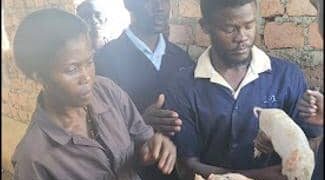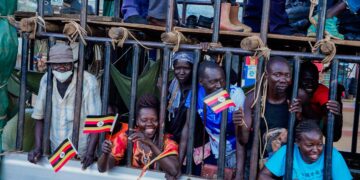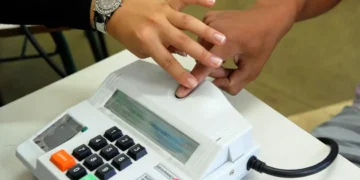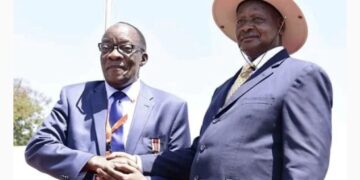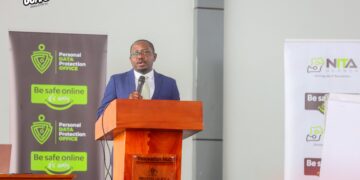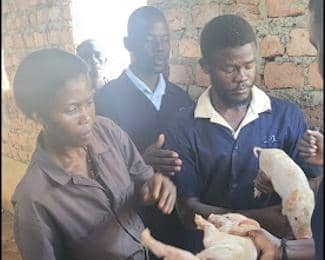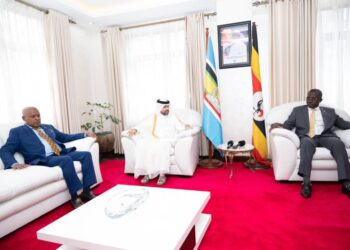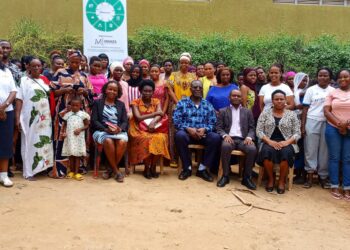AGRIBUSINESS
This publication recently had the opportunity to speak with Dr. Emma Naluyima, a Ugandan veterinary doctor with a Bachelors in Vet Medicine (BVM) and a Masters in Health Services Research (MHSR) and also a selected judge for the dfcu Bank – Vision Group Best Farmers Competition 2025. Over the years, Dr. Naluyima has not only built a successful farm but has also empowered several youth and women to perceive agriculture as a profitable and transformative venture. Her approach combines technical expertise, innovation and a deep understanding of the best sustainable farming practices. In this Q&A, Dr. Naluyima shares her inspiring journey, from how she got into piggery farming to the key lessons she has learned over the years. She discusses the transformative impact agriculture has had on her life, how support from financial institutions like dfcu Bank has helped her expand her operations, the challenges she continues to face, the opportunities available in the piggery industry, and her vision for the future. Her story provides lessons for aspiring farmers, agriculturists, and anyone passionate about the potential of agriculture to change lives and communities.
QN 1: Briefly introduce yourself and tell us about your background.
ANS: My name is Dr. Emma Naluyima. I am a veterinary doctor by profession, a passionate farmer, an educator, a farming consultant, a wife, and a mother.
QN 2: How long have you been practicing piggery farming, and what kept you going all these years?
ANS: I have been practicing farming and specializing in piggery farming and utilizing small pieces of land for profit for about 19 to 20 years. I started with a piggery. The venture has been good to me, it’s profitable and empowering, especially for women and youth. Many people say pigs eat a lot, but that’s often due to misinformation. A pig weighing around 100 kilograms only needs about 3 kilograms of well-balanced feed per day. The challenge now is the high cost of feed. When I started, the maize brand cost was UGX 50 per kilo. Today, it can go as high as UGX 1,200.
QN 3: What are some of the key lessons you have learned over the years in managing a successful piggery?
ANS: Success in farming is characterised by three key pillars, as these include good genetics, proper feeding, and strong management. These three complement one another. For example, good genetics mean nothing without quality feed. And even if you have both, poor management will fail you. Management is about attention to detail, ensuring timely insemination, keeping accurate records, and responding fast. If you miss a service date, you delay your production cycle, and that affects your income. It’s all interconnected.
QN 4: How has piggery farming impacted your life personally, financially, and professionally?
ANS: I am grateful for this piggery project because it has transformed my life. I paid for my Master’s degree using revenue from selling pigs. Piggery, when done right and with good genetics, proper feeding, and solid management best practices, is very rewarding. The problem is, many people want shortcuts, they buy high-quality animals but don’t feed or manage them well, which leads to disappointment.
QN 5: How did you come to know about the dfcu Bank agricultural financing or farmer support programs?
ANS: I learned about dfcu Bank at a time when I needed financing for my piggery farm. Initially, dfcu seemed like a bank for “big people,” especially corporates and the wealthiest. However, that perception changed when they supported us as Best Farmers and gave us money. It was during that time that I opened an account and began banking with them.
QN 6: In which ways has dfcu Bank supported your piggery project? (e.g., financing, training, market linkages).
ANS: dfcu has supported me with various financing solutions which I have used to further expand operations, restock and import new pig breeds. Unfortunately, Covid-19 hit soon after, and I had to restructure the loan. I love dfcu, the way they work, the responsiveness, and the respect they give farmers. Even when I win awards and prizes, I always ask that the funds be sent through my dfcu Bank account.
QN 7: How important has this support been in scaling up your operations?
ANS: The loans have been a turning point in my life. Despite some setbacks like swine fever striking and losing a significant number of animals, the support was essential. It helped me get started, and the lessons I learned through that experience have helped me bounce back stronger.
QN 8: What was your reaction when you were announced as a winner of the dfcu Bank – Vision Group Best Farmers Awards?
ANS: Winning the dfcu Bank – Vision Group Best Farmers Award was one of the most humbling and uplifting moments of my life. When my name was announced, I was completely overwhelmed with joy and disbelief, considering I was only farming on one acre. I felt a deep sense of recognition for the years of hard work, sacrifices, and commitment to transforming my farm into a sustainable and impactful agribusiness.
QN 9: Have you received any new opportunities following this recognition, win, and award?
ANS: Absolutely. The recognition has opened doors both locally and internationally. People approach me, some I have never met, telling me how my story has inspired them. I have received invitations to speak at various events, and I have even been part of global forums, including the World Food Prize community. The award was a springboard that expanded my reach and amplified my voice in the agricultural space.
QN 10: What are some of the major challenges you face in piggery farming today?
ANS: Swine fever remains a major challenge because there’s no vaccine yet. However, over time, we have developed strategies to reduce its impact. Every time we are hit, we learn and improve.
We have also diversified our feeding model, we use hydroponics and black soldier fly larvae to feed chickens and fish, which helps generate income to support pig feeding. We also repurpose animal waste for fertilizer. This multi-enterprise approach helps us manage costs and remain profitable even when feed prices are high.
QN 11: How do you manage risks such as diseases, market fluctuations, or feed shortages?
ANS: Our approach to managing risks is built around diversification. Because we have different enterprises on the farm, like cows, a school, and pigs, when one faces a challenge, another keeps us going on. Let me give you an example. When we get milk from the cows, we don’t rush to sell it raw. Instead, we add value by processing it into products. And even before selling the processed milk, we first look at the balance of how much we need for the pigs. We actually “sell” some of the milk to the pigs, and they grow faster as a result. That alone increases the value of the pigs, so we eventually sell them at a better price. We do this deliberately: for example, instead of selling a litre of milk at UGX 3,000, we feed a quarter-litre to the pigs and get more out of it long-term. This approach helps us reduce dependence on external feed and stabilize income even during market shifts or disease outbreaks.
 QN 12: What opportunities do you see currently in the piggery industry, especially for smallholder farmers?
QN 12: What opportunities do you see currently in the piggery industry, especially for smallholder farmers?
ANS: Once you understand your business, the opportunities are endless. If you understand it well, it becomes clearer. And that’s the mindset farmers need. Who are your customers? What are their needs? What’s the value chain? What gives me an edge is that I am a vet by profession, so I had technical knowledge from the start. But I didn’t keep that to myself. I trained other farmers. Back then, we had to import everything from vaccines to equipment. But now, local companies are producing what farmers need because the industry has grown and there’s demand. The piggery sector has developed. Now, all industries, whether it’s pigs, cows, or poultry, have support systems. I had the opportunity to travel, gather knowledge, and bring in what I needed. But I didn’t spread myself too thin, I stayed focused on production. Today, I don’t even import anything for myself unless it’s something I know isn’t available locally. That’s how much the industry has grown. So for new farmers, the opportunity is real, they have blueprints, access, and knowledge right in front of them.
QN 13: How accessible are local and international markets for your piggery products?
ANS: Honestly, the market demand is huge. We cannot even meet it. Uganda is the second-largest consumer of pork in Africa, after China globally. The problem is not market access, it’s production. Many people don’t want to breed pigs consistently, yet the demand is there. At just two to two-and-a-half months, a pig consumes 45 kgs of feed to weigh 25-30kg. Their target weight is 100kg at 6 months. That’s rapid growth and fast turnover if managed well. The issue isn’t a lack of customers, it’s a lack of commitment to producing on a large scale. This could also be due to a lack of access to finance. That is where banks like dfcu bridge the gap.
QN 14: What advice would you give to fellow Ugandans who are aspiring to venture into piggery farming?
ANS: The number one thing is knowledge. Many people rush in and burn their fingers because they don’t understand the business. It’s not just about piggery—it applies to any kind of business, even hardware. Do a visibility study. Pay professionals. Seek information. Don’t guess. Get trained, use experts, and invest in understanding the business before putting in your money. Farming, like any other business, needs a clear plan and the right expertise.
QN 15: Where do you see your piggery project in the next 10 – 20 years?
ANS: We have already achieved a lot. Going forward, our focus is on turning the farm into a full-fledged learning and training centre in Uganda and internationally. We are currently known as the best breeders, but most importantly, we want to be the go-to source of knowledge and practical training in piggery. I have people reaching out from Ghana, India, and beyond, but the biggest challenge is accommodation. We can only train during school holidays because we don’t have a proper accommodation facility. So in the next 10–20 years, we aim to build a training centre or hostel. A place where farmers can come, stay, learn practically, and return empowered to do the same in their communities. We want to formalize the knowledge-sharing process and expand our impact.
